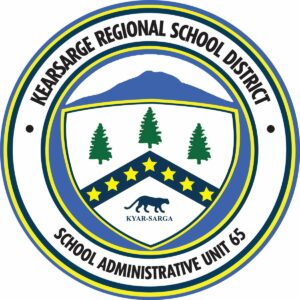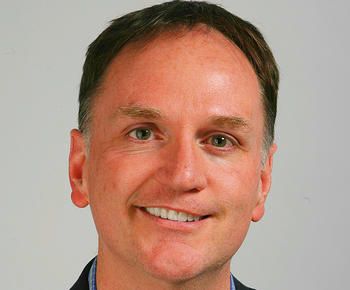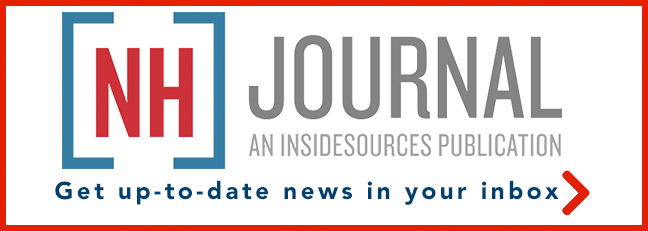How much is too much to ask New Hampshire taxpayers to spend on public school student’s education?
On Saturday, citizens who attended the Kearsarge Regional School District (KRSD) annual meeting rejected a proposal to spend $27,000 per pupil—because the number was too low.
Instead, they voted down a call for that spending cap and will stick with their current per-student spending: $33,000 as of the next budget year.
The crowd on Saturday was huge—more than 1,600 people, the largest local residents could remember. And the vote wasn’t close. The proposed spending cap was defeated 1,435 to 115.
The Kearsarge regional district serves the communities of Bradford, Newbury, New London, Sutton, Springfield, Warner, and Wilmot. To put its spending in perspective, sending a student to the average private school in the U.S. costs less than $15,000.
Attending the University of New Hampshire as a student who lives at home (the same way most K-12 students do) costs about $21,000 — 36 percent less than a year at Kearsarge Regional High School.
“May their property tax bills set lightly upon them,” quipped state Rep. Keith Ammon (R-New Boston) on Twitter/X.
Both Democrats and Republicans have pledged to take action to address New Hampshire’s property taxes, which according to the Tax Foundation, are the fourth highest in the country. School funding is the top driver of local spending and property tax bills.
Which has some Granite State political observers scratching their heads.
New Hampshire has suffered a massive decline in school enrollment over the past 25 years, and yet school spending in inflation-adjusted dollars has continued to rise. Shouldn’t fewer students using public schools mean less spending, not more?
KRSD is a perfect example of the problem, critics say.
“From 2001-2019, enrollment in the Kearsarge Regional School District fell by 15.6 percent, but spending increased spending by 60 percent,” said Drew Cline, president of the Josiah Bartlett Center for Public Policy. “The district increased instructional spending by 104 percent, and general administration spending by 168 percent.
“The idea that current spending levels are the bare minimum needed to provide essential services and can’t be trimmed as enrollment continues to fall is simply not believable.”
Those are 2019 numbers. Since then, the budget has grown 24 percent and will reach $33,000 per student for 180 instructional days in the next budget year.
Where is the money going? Not to classroom teachers. In 2024, the average KRSD teacher earned around $68,000 per year, just above the state average of $67,521.
With an average class size of 16 students, that’s $526,000 per classroom.
And the spending isn’t impacting student performance. Standardized test scores have remained largely flat since at least 2015.
Still, the attendees at Saturday’s meeting overwhelmingly voted in support of the huge increases in per-pupil spending. And they aren’t alone. According to the New Hampshire Department of Education, school spending is surging across the state. “The [New Hampshire] per pupil amount of all expenditures – operating, tuition, transportation, equipment, construction, interest and non-K-12 expenditures is $24,755.95,” the department reports.
Republicans who support property tax relief have been pointing to this spending vs. declining enrollment divide as a good place to start. The idea of a spending cap—even one set as high as $27,000 per student—could be a smart first step toward fiscal responsibility.
State funding for public schools hit an all-time high in the last budget. But if property taxpayers support spending more than $30,000 per pupil in their local schools, increasing state aid simply subsidizes costs that, to many fiscal hawks, appear excessive.
House Majority Leader Rep. Jason Osborne (R-Auburn) told NHJournal he may have an idea to address the problem.
“Perhaps, if they are unwilling to cap themselves, the state will step in and cap local taxes for them,” Osborne said.
Some House Republicans told NHJournal on background they believe Kearsarge is a Democratic enclave, and progressives helped drive out a crowd on Saturday that’s not representative of the average Granite State community.
It’s true that the communities have a House delegation that’s nearly all Democrat, and Vice President Kamala Harris carried every town but one (Springfield). But the school district crosses two state Senate Districts: Suzanne Prentiss (D-West Lebanon) and Dan Innis (R-Bradford)
Innis says that while the vote was overwhelmingly in favor of higher spending, he believes the fact that a cap was proposed is a sign people are starting to sense that costs and attendance are getting out of whack.
“Kearsarge (KRSD) now knows that folks are paying attention. I do think that some sort of budget restriction would have passed if it had not been so severe,” Innis said. “People want responsible spending in our schools, with good outcomes. They do not want draconian cuts that hurt teaching and learning.”
Innis said the Kearsarge story is being played out across the state, and the GOP majority in Concord “is going to have to be proactive in the State House and take a good look at things in the present budget cycle.
“Cuts can be made without pain in many cases. Kearsarge has a budget of over $50 million. I am certain there are opportunities to save some money.”
Aaron Garth Smith is director of education reform at the libertarian Reason Foundation, and one of the authors of its most recent report card on U.S. public schools in the 50 states.
It reported New Hampshire had the second-highest increase in teacher salaries between 2002 and 2020, and the fastest growth in school staffing versus enrollment in the country. It found that while the number of New Hampshire students fell 14 percent, the number of non-teacher school staff jumped nearly 20 percent.
“Across states, there’s an inconsistent relationship between public school spending and student outcomes,” Smith told NHJournal. “Spending more doesn’t guarantee better results. Increasingly, public schools are spending more on non-teaching staff such as counselors, instructional aides, and social workers.
“Taxpayers should question where their dollars are going and whether they’re being put to good use,” Smith added.
Claire Ketteler, an elected member for Newbury on the Municipal Budget Committee, supported the cap effort.
“Emotion does not pay property tax bills,” she told NHJournal.





